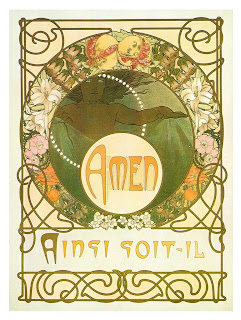Long before the advent of the printing press, books were priceless, treasured works of fine art dedicated only to what was considered noble causes such as religion or royalty. They were simply so time-consuming and expensive to make, that only the very rich or the very dedicated (monks) could have them produced. Every page, every letter, had to be hand drawn. The materials were expensive and sometimes hard to come by, books were made on animal skins and each color of ink had to be hand made before use. Most of the early examples of these books that we have now are portions of the Bible or are otherwise dedicated to the Christian faith.
 |
| Book of Kells |
The Book of Kells, which Meggs describes as “the culmination of Celtic illumination” [47] is a beautiful example of the painstaking detail and sheer amount of work that would go into these European Christian manuscripts. The Book of Kells features ornate capitals, huge initial letters, complicated full-page illustrations, intricate knot work, fluid interlacing, careful patterns, and precise lettering. The amount of time that would have gone into a work like this is staggering, and had to be split among many people inside a workshop known as a scriptorium. No two manuscripts would ever end up quite the same, making each it’s own priceless work of art.
The next step toward the printing press was the introduction of woodblock printing in Europe. This method was already used earlier in history in other countries, but was now gaining popularity in European countries. Although creating a wood block image for printing was still a painstaking process, often still done in a scriptorium, the creation of woodblocks combined with the new practice of using paper made books significantly cheaper and easier to produce in more quantities.
 |
| Biblia Paupernum |
Pages such as this one from a Biblia Paupernum (Bible of the Poor) show a few of the similarities to earlier manuscripts that were very evident in printing before the printing press. Though there is much less detail and certainly not the same depth in color as manuscripts such as the Book of Kells or the Limbourg brothers’ Les tres riches heures du duc de Berry (The Very Rich Hours of the Duke of Berry), the composition of the page and the illustrative style still have a very medieval manuscript feel to them. At this point, text was being carved directly into the woodblock around the images, so the pages still have a handmade feel to them although they can be copied exactly over and over. Often the woodblock prints were hand painted as well, further connecting them to earlier book making methods. Although it was still a time-consuming and careful process, woodblock printing made it possible to print Bibles like this in relative bulk to bring the gospels to the poorer man. Books were no longer limited to only the church or the very rich, like the Book of Kells or the later Book of Hours manuscripts, and woodblock printing could be used for other things such as spreading information and creating objects like playing cards.
 |
|
 |
The Very Rich Hours of the Duke of Berry
|
 |
| Nuremberg Chronicle |
When moveable type printing and the printing press came about, woodblock printing became used more exclusively for illustration, and the text itself began to be made with more regularity and less of a hand made feel. Type and illustration began to become more separated, and books began to have more of a layout like we are used to today. Woodcut illustrations were still often hand painted after printing, and people like Albrecht Durer and Anton Koberger furthered woodblock illustration as an art form, creating block prints with more careful detail and composition than were previously seen. These pages from the Nuremberg Chronicle are a good example of how the layout of books was beginning to change. Illustrations no longer have the organic feel that they did in the days of manuscripts; they don’t flow through the text and become parts of lettering nearly as often. Both illustrations and text become more self-contained, in tightly fitted rectangular sections of picture and type. Even in the page where the church tower sticks into the text, the text surrounds it in a rectangular pattern, not breaking into its space. Book layouts become very different and less reminiscent of the manuscripts that came before them.
 |
| This was the only picture I could find, a bigger one is on Meggs page 107 |
Text itself is also beginning to become less calligraphic and has much less of a handmade feel. Type is standardized and modernized, and specific print fonts are created and put into use. As the Renaissance comes about, we begin to see books that look very much like the books we have now, and far less like the handmade manuscripts we saw in earlier times. Print has now become its own art form, with its own conventions and its own unique styles. The printed book no longer mimics the manuscript, although they are still at their root inspired by handmade books. This page by Geoffroy Tory in Champ Fleury is a good example of how the layout of the text itself (the way it is broken up, the different sections of information) becomes more important and more of a way of emphasizing the content in and of itself than it was in the past. Illustration is still important, but it is more supplementary and takes up less of the page. The layout of both text and illustration is treated as a composition and white space on the paper is left to enhance this composition. By this time, we can see how are own modern styles of print come about and how both text and illustration have evolved greatly over time.































